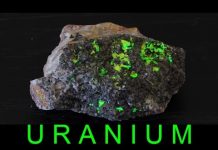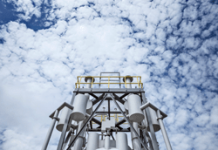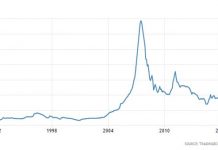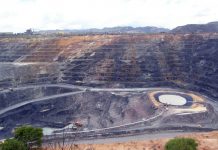Debra Fiakas CFA
Many are firmly opposed and a few more are skeptical of the nuclear energy industry. A big concern is the waste resulting from the uranium enrichment process that is part and parcel of the reactors we have chosen to use for nuclear power generation. Some see recycling of the waste as an answer. First a short primer on uranium and then the recycling story.
Natural uranium consists of a mixture of three radioactive isotopes which are identified by the mass numbers U-238 (99.27% by mass), U-235 (0.72%) and U-234 (0.0054%). Uranium is everywhere in the environment. Most nuclear reactors used in the power industry require uranium in which the U-235 content is enriched from 0.72% concentration found in nature to about 1.5% to 3.0%. Hence the nuclear power industry uses the practice of uranium enrichment.
The uranium remaining after removal of the enriched fraction contains about 99.8% U-238, 0.2% U-235 and 0.001% U-234. These tailings of the enrichment process are called depleted uranium or DU. There are some commercial uses for DU such as shielding material for other radioactive material and as ballast. Other examples include sailboat keels, counterweights and shielding in industrial radiography cameras.
The military also has uses for DU. Because of its high density, depleted uranium can also be used in tank armor, sandwiched between sheets of steel armor plate. However, the military uses cannot consume all DU produced. About 95% of the depleted uranium produced is stored as uranium hexafluoride (UF) in steel cylinders in open air storage yards close to enrichment plants. The Department of Energy is thought to have accumulated at least 700,000 tons of UF in storage.
In a “one man’s garbage is another man’s treasure” sort of business model, International Isotopes (INIS: OTC/BB) proposes to turn these tailings into commercial products such as hydrofluoric acid and fluoride gas. INIS has applied for regulatory approval to offer a de-conversion service to entities actively enriching uranium such as nuclear power generators. The de-conversion process separates valuable elements from the tails and creates a chemically benign waste for disposal.
It is a compelling addition to the company’s usual business in nuclear medicine and radiochemical products. INIS expects to not only get its DU raw materials for free, they will get paid to collect the DU. The company has a five-year fixed price contract with Urenco USA, a uranium enrichment facility, to collect the resulting DU and de-convert these tailings. INIS expects to produce hydrofluoric acid as part of the de-conversion process Urenco hiring INIS to perform. There is also a contract in place to sell the hydrofluoric acid (HF) to an unnamed customer in the HF industry.
In a recent investment presentation management of International Isotopes described the new business opportunity as all tied up in a tidy knot. However, there is a critical missing step. A safety evaluation report was completed in May 2012, but INIS doesn’t expect a final environmental impact statement until August 2012. With finalization a license could be received as early as September 2012.
We are adding INIS to the Efficiency Group of our Mothers of Invention Index. Granted it is a stretch to view International Isotopes among providers of energy alternatives. However, it seems worthwhile to watch a company that might provide a key link in improving the economics and safety of nuclear energy, one of the key alternatives to fossil fuels.
Neither the author of the Small Cap Strategist web log, Crystal Equity Research nor its affiliates have a beneficial interest in the companies mentioned herein. INIS is included in the Efficiency Group of Crystal Equity Research’s Mothers of Invention Index.








